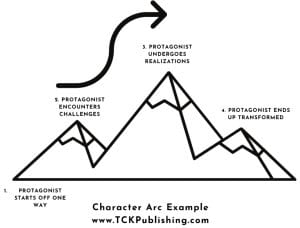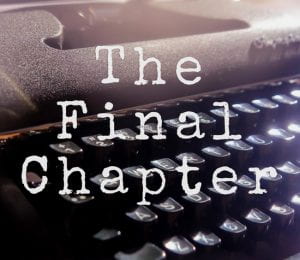 I am a fan of short, crisp chapters. Something that worried me about my first chapter was the length. At 8pp it seemed a bit long, but was held together by the same scene. It must have worried me, because I couldn’t sleep and got up to split the chapter into two. It wasn’t easy, but at least I could now get back to sleep—that is, until I decided to add another chapter to the end of my novel. This is the fun part and why I love writing. By adding another end chapter, I was able to complete a plot circle and connect with an earlier character. It brought some threads together and had the added bonus of giving freedom to my protagonist to enjoy a new, and better, life. This new chapter took my lead character out of the shadows and into the sunshine. I also wanted an ending that finished my novel, yet opened the possibility of another. It goes something like this;
I am a fan of short, crisp chapters. Something that worried me about my first chapter was the length. At 8pp it seemed a bit long, but was held together by the same scene. It must have worried me, because I couldn’t sleep and got up to split the chapter into two. It wasn’t easy, but at least I could now get back to sleep—that is, until I decided to add another chapter to the end of my novel. This is the fun part and why I love writing. By adding another end chapter, I was able to complete a plot circle and connect with an earlier character. It brought some threads together and had the added bonus of giving freedom to my protagonist to enjoy a new, and better, life. This new chapter took my lead character out of the shadows and into the sunshine. I also wanted an ending that finished my novel, yet opened the possibility of another. It goes something like this;
[“This is Maria.”
“Pleased to meet you and thanks for joining us,” I say. She is wearing a wedding ring and I ask, “Is your husband joining us?”
Maria looks away and drops her head. All I can say is, “I’m sorry I asked.”
“It…it’s O.K. He died at sea.”
I change the subject. “Rian, what are we drinking?”
“Ombra, a fine Prosecco from northern Venice.”
“What does ombra mean?” I ask.
“It has a story,” Rian replies. “In Venice, many years ago, a wine merchant set up his cart at the foot of the bell tower in St. Mark’s square. As the day wore on, he moved his cart to stay in the shade and keep his wines cool and fresh for the customers. Ombra means shade or shadow. Here, try some.”
The taste was a burst of refreshing citrus after the hot afternoon. Like the wine seller in Rian’s story, my time at MI6 had been spent chasing shadows.
I raise my glass, “To new friends and a better future.” As I swallow, my eyes meet Maria’s and sunshine fills my soul at last.]
 Alaa Al-Barkawi says, “Growing up Iraqi Muslim American post 9/11 and during the US occupation of Iraq, I was constantly flooded with images of my people as the villains, and it affected my work as a writer…Through many trials, plot changes, and mental breakdowns…not only did I have a newer, shinier draft—but a new story I didn’t know existed in this book!”
Alaa Al-Barkawi says, “Growing up Iraqi Muslim American post 9/11 and during the US occupation of Iraq, I was constantly flooded with images of my people as the villains, and it affected my work as a writer…Through many trials, plot changes, and mental breakdowns…not only did I have a newer, shinier draft—but a new story I didn’t know existed in this book!”
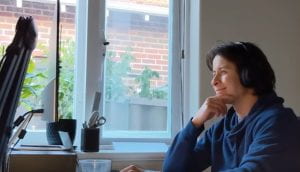 A writer (
A writer (
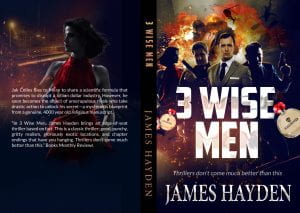
 What to do on a cold and rainy day? I could finish painting the spare bedroom, but the weather is damp and the paint won’t dry very well. I could take my wife out for a coffee, but she is ill and resting. I could keep editing my new book—or, rather, what I call fine-editing since the major editing is finished. No, I need a new inspiration. So, I decide to work on my first book; produce a new cover, revise the first chapter and update the About the Author page. My goal is to have this done in three days. Meanwhile, my darling publisher Amazon have changed their Kindle format from .mobi to .pub, so that requires more work :-). The next day, I have a head cold and don’t feel like doing much at all. But, the weather is warmer and the painting is almost finished. I’m praying for a better week ahead and a new-look to the bedroom as well as my first book. More news to follow if all goes well. {PS: good progress on both the bedroom renovation and book revisions. The text changes are done and have been uploaded to Amazon. Now I am working with my illustrator with final touches to the cover. All will be revealed soon}
What to do on a cold and rainy day? I could finish painting the spare bedroom, but the weather is damp and the paint won’t dry very well. I could take my wife out for a coffee, but she is ill and resting. I could keep editing my new book—or, rather, what I call fine-editing since the major editing is finished. No, I need a new inspiration. So, I decide to work on my first book; produce a new cover, revise the first chapter and update the About the Author page. My goal is to have this done in three days. Meanwhile, my darling publisher Amazon have changed their Kindle format from .mobi to .pub, so that requires more work :-). The next day, I have a head cold and don’t feel like doing much at all. But, the weather is warmer and the painting is almost finished. I’m praying for a better week ahead and a new-look to the bedroom as well as my first book. More news to follow if all goes well. {PS: good progress on both the bedroom renovation and book revisions. The text changes are done and have been uploaded to Amazon. Now I am working with my illustrator with final touches to the cover. All will be revealed soon}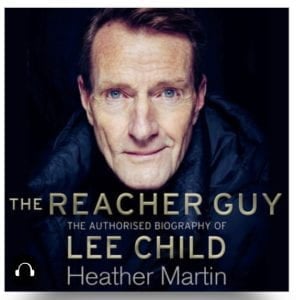 Author Lee Child has published 25 thrillers, featuring Jack Reacher, which have sold more than 100 million copies worldwide.So when he says The Day Of The Jackal is “a year-zero, game-changing thriller, one of the most significant of all time” you listen.
Author Lee Child has published 25 thrillers, featuring Jack Reacher, which have sold more than 100 million copies worldwide.So when he says The Day Of The Jackal is “a year-zero, game-changing thriller, one of the most significant of all time” you listen. set in 1963, about an Englishman hired to assassinate the French president at the time, Charles de Gaulle. But publishers were not interested. After all de Gaulle was very much alive, the mission had obviously failed, so where was the suspense? That, says Child, is the key to its success.
set in 1963, about an Englishman hired to assassinate the French president at the time, Charles de Gaulle. But publishers were not interested. After all de Gaulle was very much alive, the mission had obviously failed, so where was the suspense? That, says Child, is the key to its success. Another dilemma—what to do with unwanted or unnecessary characters. The best idea is to let them go, but do it in such a way that it provides more tension for the main character(s). In my first thriller, the main character – Jack Colins – is chased by a woman who attempts to discover his secret. She sits next to him on a train ride to Milan and hounds her way into his life to the point of being more than annoying. At a crucial moment, Jack discovers her body in an ante-room in a small church and it’s not a pretty scene. But, her demise piles more pressure on Jack and he is forced to flee to safety in an e-type Jaguar, aided by his sister. Unfortunately, she also becomes an ‘unnecessary character’ and …. no more spoilers. But, if you really want to find out what happens to my unwanted characters, why not
Another dilemma—what to do with unwanted or unnecessary characters. The best idea is to let them go, but do it in such a way that it provides more tension for the main character(s). In my first thriller, the main character – Jack Colins – is chased by a woman who attempts to discover his secret. She sits next to him on a train ride to Milan and hounds her way into his life to the point of being more than annoying. At a crucial moment, Jack discovers her body in an ante-room in a small church and it’s not a pretty scene. But, her demise piles more pressure on Jack and he is forced to flee to safety in an e-type Jaguar, aided by his sister. Unfortunately, she also becomes an ‘unnecessary character’ and …. no more spoilers. But, if you really want to find out what happens to my unwanted characters, why not 
 I am a fan of short, crisp chapters. Something that worried me about my first chapter was the length. At 8pp it seemed a bit long, but was held together by the same scene. It must have worried me, because I couldn’t sleep and got up to split the chapter into two. It wasn’t easy, but at least I could now get back to sleep—that is, until I decided to add another chapter to the end of my novel. This is the fun part and why I love writing. By adding another end chapter, I was able to complete a plot circle and connect with an earlier character. It brought some threads together and had the added bonus of giving freedom to my protagonist to enjoy a new, and better, life. This new chapter took my lead character out of the shadows and into the sunshine. I also wanted an ending that finished my novel, yet opened the possibility of another. It goes something like this;
I am a fan of short, crisp chapters. Something that worried me about my first chapter was the length. At 8pp it seemed a bit long, but was held together by the same scene. It must have worried me, because I couldn’t sleep and got up to split the chapter into two. It wasn’t easy, but at least I could now get back to sleep—that is, until I decided to add another chapter to the end of my novel. This is the fun part and why I love writing. By adding another end chapter, I was able to complete a plot circle and connect with an earlier character. It brought some threads together and had the added bonus of giving freedom to my protagonist to enjoy a new, and better, life. This new chapter took my lead character out of the shadows and into the sunshine. I also wanted an ending that finished my novel, yet opened the possibility of another. It goes something like this;